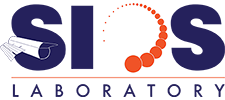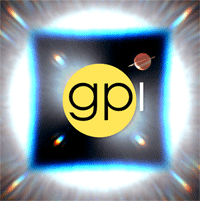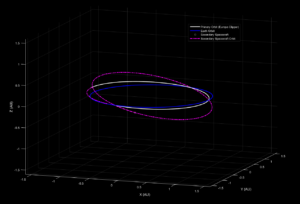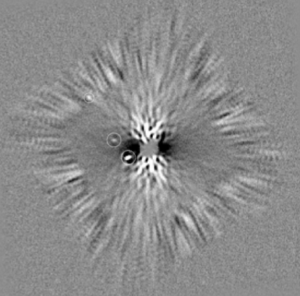Undergraduate/MEng/MS Research Opportunities
Current Projects
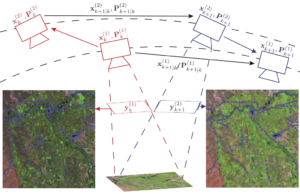
Sub-Pixel Inter-Satellite Imagery Cross- Calibration via Image Decomposition and Dynamic Filtering
This NASA-funded project seeks to create new geometric cross-calibration capabilities for constellations of Earth-observing spacecraft by implementing a filter whose state captures full satellite dynamics and camera model with measurements including invariant features extracted from surface images. These feature sets and state estimates would be shared between satellites to improve global state knowledge and detect transient events. As part of this work, we have developed a new, fourth-moment Unscented Kalman Filter called HOUSE to propagate full states and uncertainties.
Automated Alignment and Control of Optical Systems
Our lab facility is used to study problems associated with automating the alignment and maintenance of complex beam paths for high-precision optical systems such as high-contrast imagers and laser communications systems. In particular, we study the potential and limits of focal-plane, low-order wavefront sensing to correct for system misalignments, or steer moveable system optics using only imaging data.
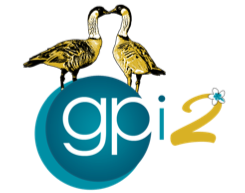
GPI 2.0
Funded by grants from the NSF (Major Research Instrumentation) and the Heising-Simons foundation, we are working on a major upgrade to the Gemini Planet Imager. This will include a new wavefront sensor, new real-time adaptive optics control computer, new internal cameras, upgrades to the science instrument, and software/usability upgrades throughout the whole system. The project involves collaborators at Notre Dame, UC San Diego, Stanford University, the Herzberg Astronomy and Astrophysics Research Centre, and the Space Telescope Science Institute. The Cornell team’s role in the upgrade will be leading the system engineering as well as the software upgrades. The upgrade is expected to be complete by early 2024, at which point GPI 2.0 will be shipped to Hawaii and re-commissioned at the Gemini North observatory.
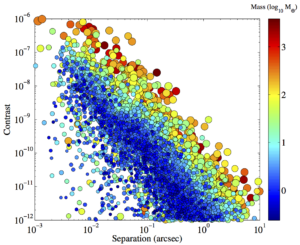
Modeling for the Nancy Grace Roman Coronagraph Instrument
NASA’s Nancy Grace Roman Space Telescope mission is scheduled to launch in 2027 and will include a coronagraph instrument (CGI) for direct imaging of exoplanets from space. SIOSlab has supported CGI development since pre-phase A, via contributions to the WFIRST-AFTA Science Definition Team, through a WFIRST Preparatory Science investigation, and via membership in the Coronagraph Science Investigation Team (SIT). We are currently members of the Coronagraph Community Participation Program (CPP). As part of this work, we are developing exposure time calculators (as part of the EXOSIMS software) and a target database for the CGI technology demonstration.
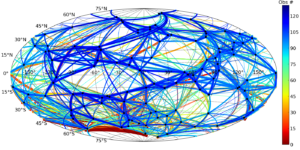
Optimizing Space Mission Scheduling
Upcoming and future space missions will have increasing autonomy in how they schedule and carry out various tasks. We model and simulate full missions to figure out how to make them more efficient and achieve mission goals as quickly as possible. This research involves the development of the EXOSIMS software framework, as well as multiple associated tools.
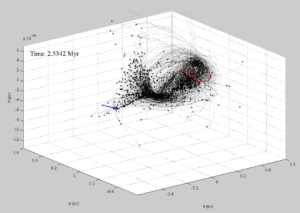
Dynamical Studies of Planetary Systems
We work on a variety of dynamics problems associated with planetary systems including orbit fitting to observational data, efficient orbit propagation for N-body systems, and development of novel trajectories for new space missions. Past work has also included studies of mass transfer between stars and long term numerical integration of the solar system to search for stable objects near the Lagrange points.
Past Projects
Gemini Planet Imager
The Gemini Planet Imager (GPI) is a next-generation exoplanet direct imaging instrument currently being commissioned at the Gemini South Observatory in Chile. We assisted with GPI commissioning and first light activities and are actively involved in the currently ongoing Gemini Planet Imager Exoplanet Survey – an 890 hour on-sky campaign to directly image nearby, young, giant exoplanets. We also participate in the development and support of the GPI Data Reduction Pipeline – a code base for processing and working with GPI data. This work includes research on computer vision and high-contrast post-processing algorithms. SIOSlab provides key infrastructure for the campaign and broader GPIES team.]
Gravity Assist Optimization for a Zodiacal Light Imaging Mission
Zodiacal light is caused by clouds of dust that scatter and emit light from a star. The dust clouds impact spacecraft in our solar system, create noise in space imaging, and obscure exoplanets from observation. The structure of these dust clouds has only been predicted through simulations; to obtain images a spacecraft will need to observe from a point of view above the ecliptic plane. This proposed spacecraft will detach from a primary interplanetary mission, undergo its own corrective maneuvers to properly intercept a planet for a gravity assist, and achieve the sufficient inclination for at least a 0.1AU orbital height above the ecliptic plane. This work included the optimization of the flyby parameters to minimize Δv thereby limiting mass and allowing the payload to be launched in a 3U CubeSat or smaller.
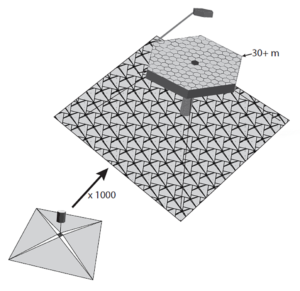
Modular Active Self-Assembling Space Telescope Swarms
We studied the feasibility of constructing giant space telescopes, far beyond the scale that would be possible with conventional construction techniques, out of standardized, mass-produced modules. These modules will be launched individually or in small groups, preferably as payloads of opportunity on other launches, and would navigate to the vicinity of the Sun-Earth L2 point using solar sails for propulsion. There, the swarm of modules would assemble autonomously, taking advantage of the novel dynamical environment, with the top sides of the modules becoming segments of the telescope mirror, while the solar sails become components of a giant, planar sun-shield. The mirror segments would all be active optics to allow for the setting and control of the required overall mirror shape. The final study report is available here.
Extracting Signals from Direct Imaging
In the search for exoplanets, direct imaging techniques (taking observations of stars and looking directly for the signal of a planet that may be orbiting it) can be a valuable approach. One common method of post-processing images used now is Principle Component Analysis, a type of Blind Source Separation algorithm. Given the widespread use of PCA, it follows that other BSS algorithms may also yield promising results. This research examines the following techniques: Independent Component Analysis, Common Spatial Pattern Filtering, and Stationary Subspace Analysis. These have been used in a variety of fields, yet this is one of the first forays into analyzing astronomic images. To do this, we are developing and using synthetic data that mimics observations from the Gemini Planet Imager instrument. Additionally, we are generating ways to evaluate these images after post-processing, like mapping the Signal-Noise Ratio throughout an image.
